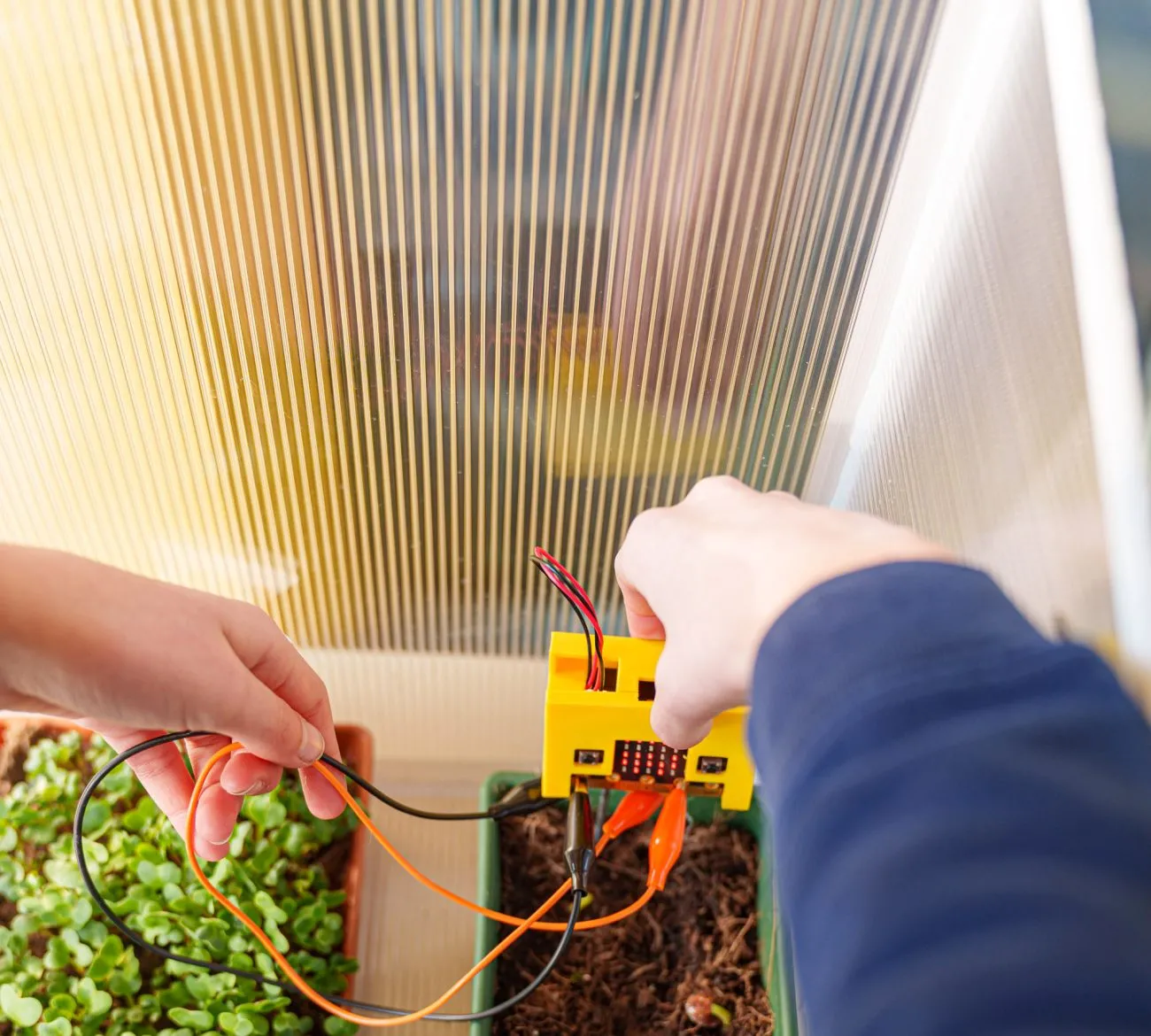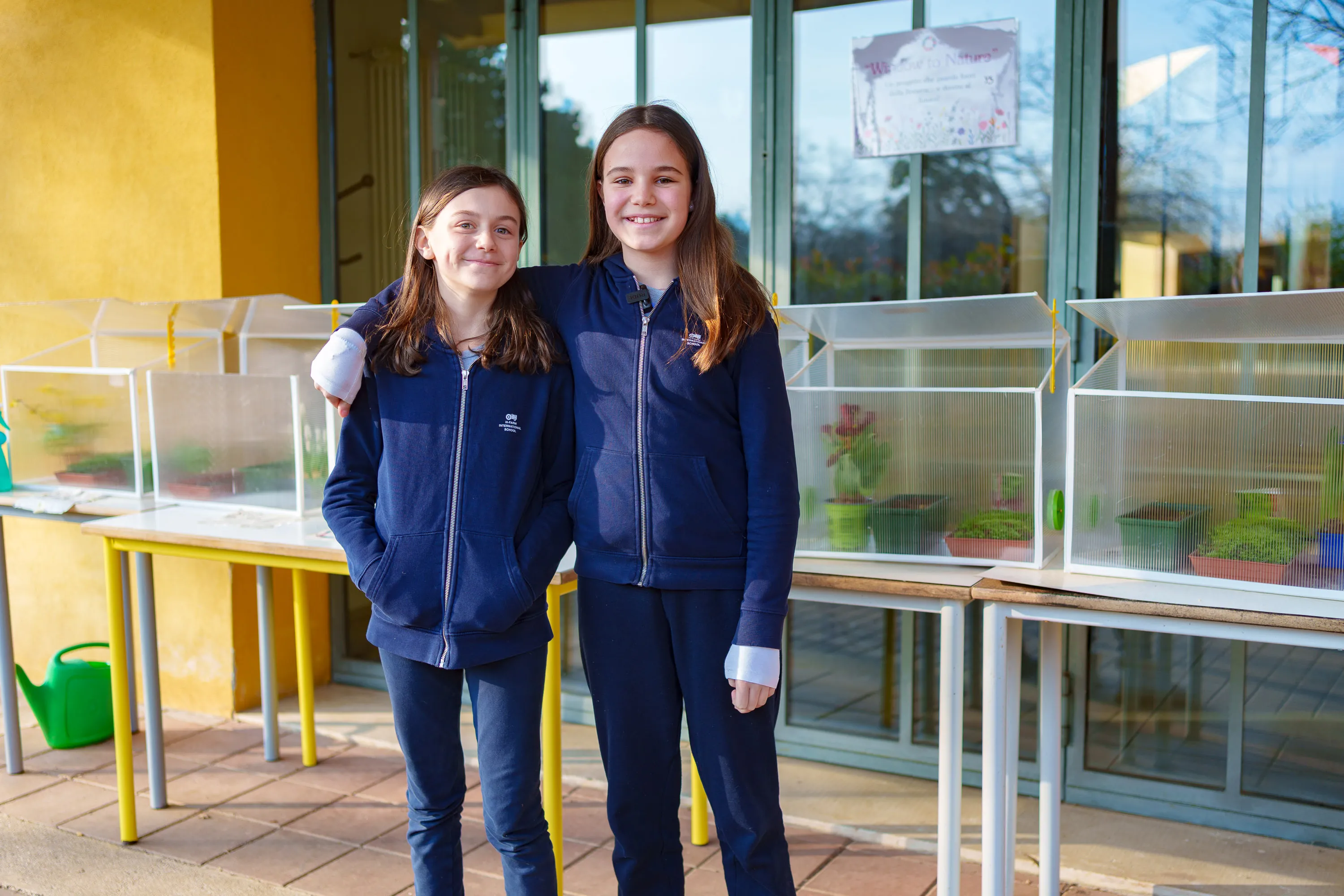At H-FARM International School Rosà, students answered that question not with a written report, but with a functioning smart greenhouse.
As part of the interdisciplinary project Una finestra sul mondo (“A Window on the World”), students explored how environmental awareness and digital tools can come together in everyday learning. Starting with key topics like climate change, the greenhouse effect, and food sustainability, they gradually moved from research to design, from design to construction, and from construction to analysis, turning a broad global issue into a shared experience.
Designing for Impact
The goal was to create a small, technologically enhanced greenhouse, a space where plants could grow under monitored conditions, supported by digital sensors and student care. Using Tinkercad, students created 3D models of their greenhouse structures. These were built with basic materials like plexiglass, hot glue, tape, and recycled elements. Where needed, more intricate parts, such as opening arms or ventilation components, were made using a 3D printer.
Micro:bit sensors, programmed using MakeCode, were installed to track soil moisture and temperature. The students planted a variety of seeds: radishes, lettuce, carrots, beans, cucumbers, and flowers. They also used the sensor data to guide irrigation and observe patterns in plant growth.
But the work didn’t stop there. Students recorded their daily observations in personal journals, developing language and reflection skills alongside scientific understanding. They learned to describe with accuracy, apply specific vocabulary, and structure their thoughts clearly, transferring practical experience into written form.
A Shared Process
One of the most distinctive aspects of the project was how students worked: not in fixed roles, but through open, collaborative exchange. While some naturally gravitated towards coding or building, and others focused on planting or data analysis, everyone had the opportunity to try different parts of the process.
Students frequently taught one another, asked questions, and shared tasks. When something wasn’t working, they regrouped. When someone was curious, they explored together. Learning moved in every direction, not just from teacher to student, but between peers.
This environment allowed students to experience collaboration not as a slogan, but as something that takes shape through action: listening, explaining, adjusting, and building together.
Real Data, Real Understanding
Throughout the project, students collected and analysed data using the Numbers app. At the end of the project, the results were clear: plants in the smart greenhouses showed 30% more growth than those grown with traditional methods, and water use dropped by around 25%, thanks to more targeted care based on sensor feedback. These outcomes helped make a direct connection between digital tools and environmental efficiency.

Learning with Purpose
In addition to scientific and technical knowledge, the project supported broader educational goals, closely aligned with the United Nations 2030 Agenda for Sustainable Development. In particular, it connected with Goal 13 (Climate Action), Goal 15 (Life on Land), and Goal 2 (Zero Hunger), allowing students to understand their place within a global framework, and their ability to contribute to it, even at a young age.
A Lasting Experience
For the students the project was a way of learning that made space for curiosity, collaboration, and responsibility. By turning abstract issues into something hands-on and locally meaningful, Una finestra sul mondo helped students build knowledge in a way that felt active, relevant, and lasting. More importantly, it showed that sustainability isn’t just something to study, it’s something to practice, discuss, and refine together.









 Back
Back
